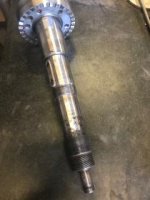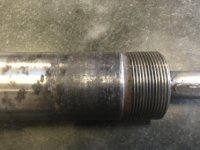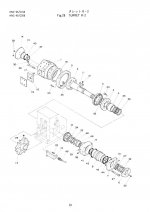Spruewell
Hot Rolled
- Joined
- Sep 8, 2015
- Location
- Northern California
I am working on repairing the upper turret on my Miyano KNC-45. It has been having trouble indexing since I got it almost 3 years ago. The solution at the time was to not index it. Faced with a little down time, I decided to get into it and revive the upper turret. I quickly found that it had lost a bearing at the rear of the turret spindle. I managed to find replacement bearings and began to take it apart. Unfortunately the bearings ran directly on the turret spindle and ended up destroying the bearing surface on it.


Now I am looking for ways to repair the shaft as I am not sure if They are still available from the manufacturer. If they are, I don’t know that I can afford it.
If you know of any shops that can do this sort of repair, I could use some contact information
Thank you


Now I am looking for ways to repair the shaft as I am not sure if They are still available from the manufacturer. If they are, I don’t know that I can afford it.
If you know of any shops that can do this sort of repair, I could use some contact information
Thank you




